Taking the Brightline to Disney: Why I switched road for rail to travel from Miami to Orlando
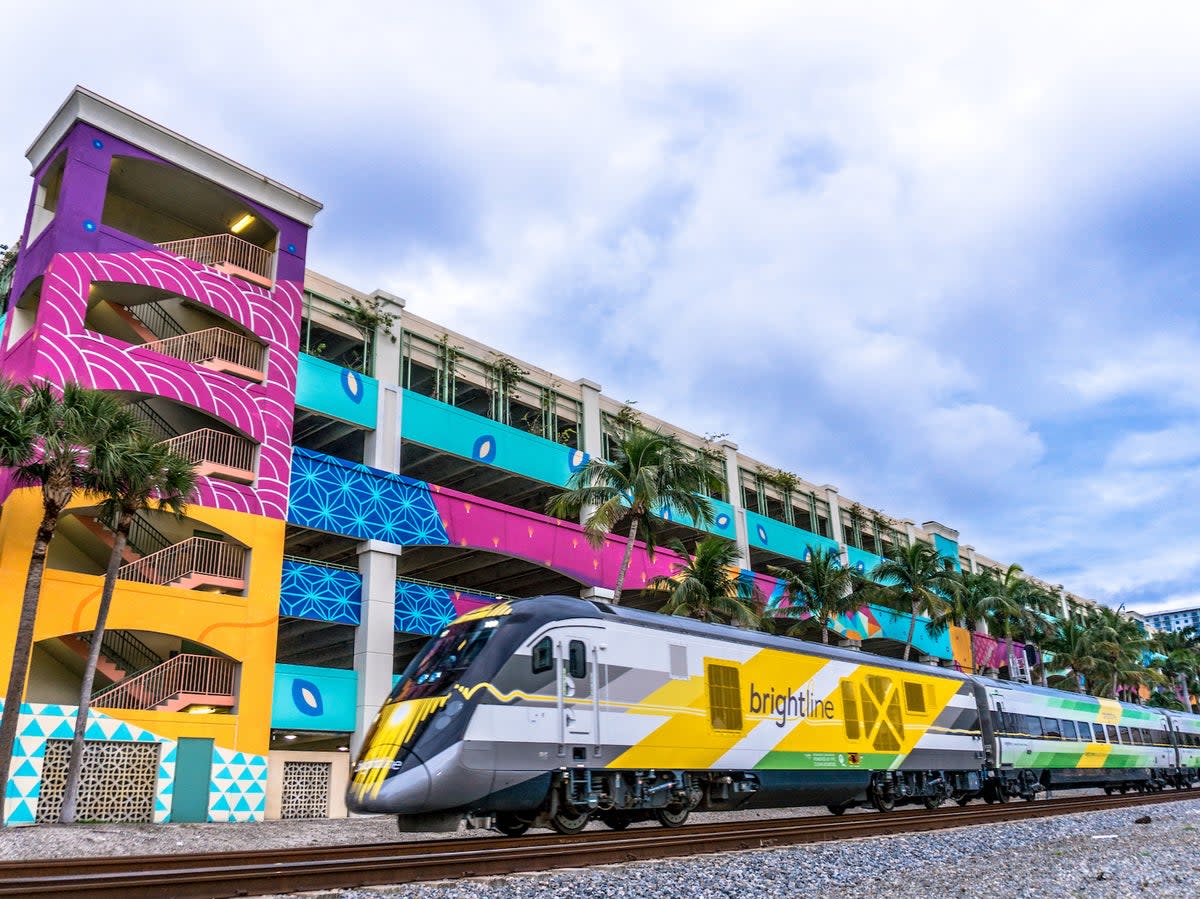
The train’s golden surface glimmers in the Florida sun as it hisses to a stop along the old freight track. We’re in my hometown Boca Raton on the platform to board the Brightline, the high-speed rail service that is going to take my family to Orlando for a long-awaited trip to Disney World.
It’s a train that my mum and I have waited more than three decades to experience, the train that I wanted to take my father on before he died from cancer last Christmas. Like most of the roughly 1.4 million British tourists and 128 million Americans who visit Florida annually, he would have happily driven to Disney World. However, he became mobility-impaired toward the end of his life and the train would have offered an easier route.
In February, I finally decided to make the journey along with my mum, my partner and our four-year-old daughter, who my father had always wanted to take to the Magic Kingdom.
With five stops in South Florida and an Orlando terminus that opened in September last year, the Brightline’s route between Miami to Orlando is the newest American rail experience. Its advantage over driving is that you are elevated above the highway and can see Florida’s sights en route. The disadvantage is that you can’t stop to enjoy them.
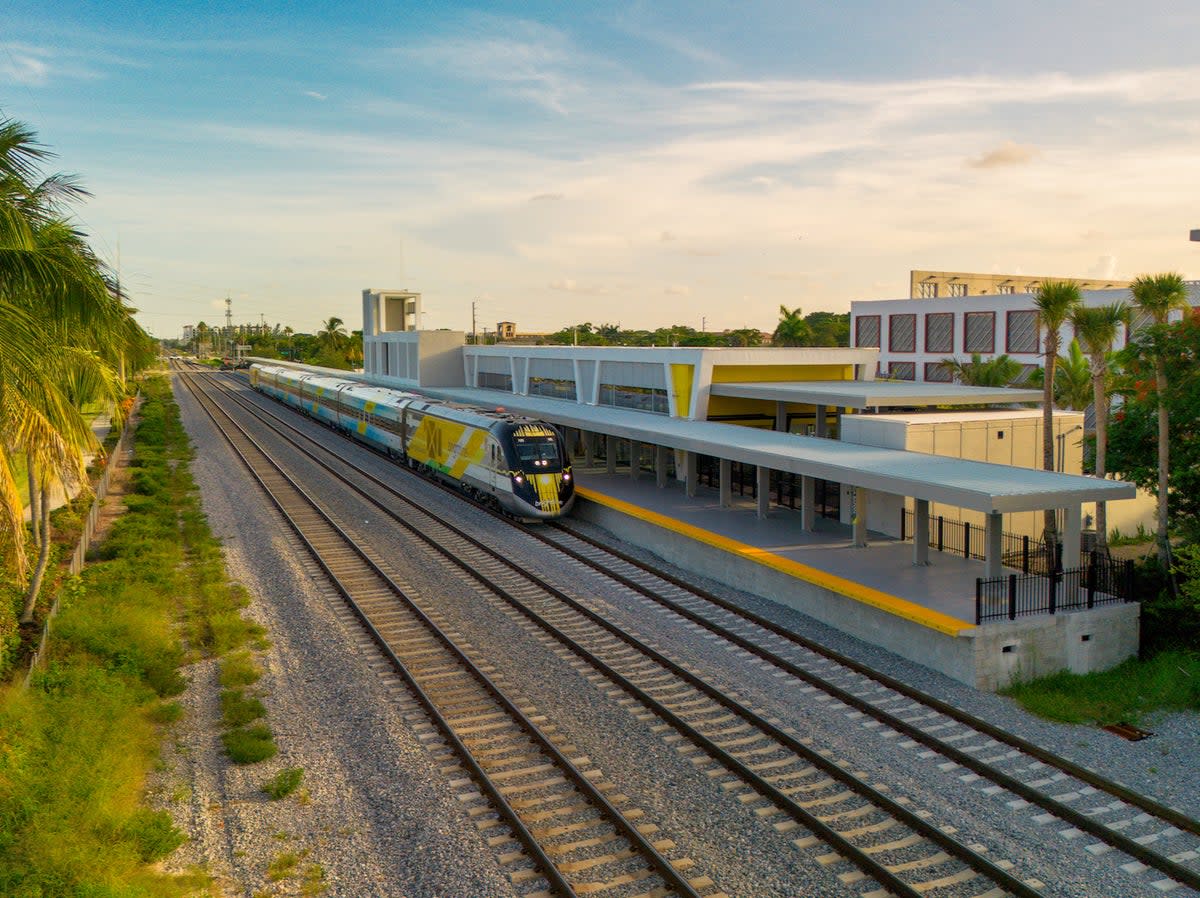
Talks about the high-speed rail project began when I was a child – I remember them as early as 1989 – with proposals of magnetic levitating trains and estimated costs of $2bn (£1.6bn) in private financing. Back then, the anticipated train would run up to 300mph from Miami to Orlando, a journey of just 90 minutes compared to roughly a three-hour drive.
But there were hiccups on the way. With construction delays, a failed partnership with Virgin Trains USA during the Covid-19 pandemic, and costs spiralling to $6bn, the project finally opened but did not fully accomplish what it set out to. What emerged was the first privately financed American rail system in over 100 years, which now uses many of the same tracks as Henry Flagler’s Florida East Coast Railway. The rail journey never achieved its 90-minute goal; the train trip now takes almost as long as driving.
Read more on USA travel:
The 240-passenger train starts in Miami, but we boarded in Boca Raton, one hour down the line. Heading south, the Brightline hugs Florida’s historical east coast routes – from the Dixie Highway, a contentiously named street with a debated history, to A1A (Atlantic 1 Alternate), the coast road immortalised in the work of pop singer Jimmy Buffett.
It’s a landscape where the signs of rapid development and the property crash of 2008 are still visible: local architect Addison Mizner’s coral Mediterranean mansions, 1970s condos, newly built strip malls and luxury golf courses appear and disappear among mango trees, mangroves, derelict industrial estates and water treatment plants. Some lawyers were sitting behind us discussing property contracts – they alighted at West Palm Beach among glamourous women in Jackie Onassis sunglasses.
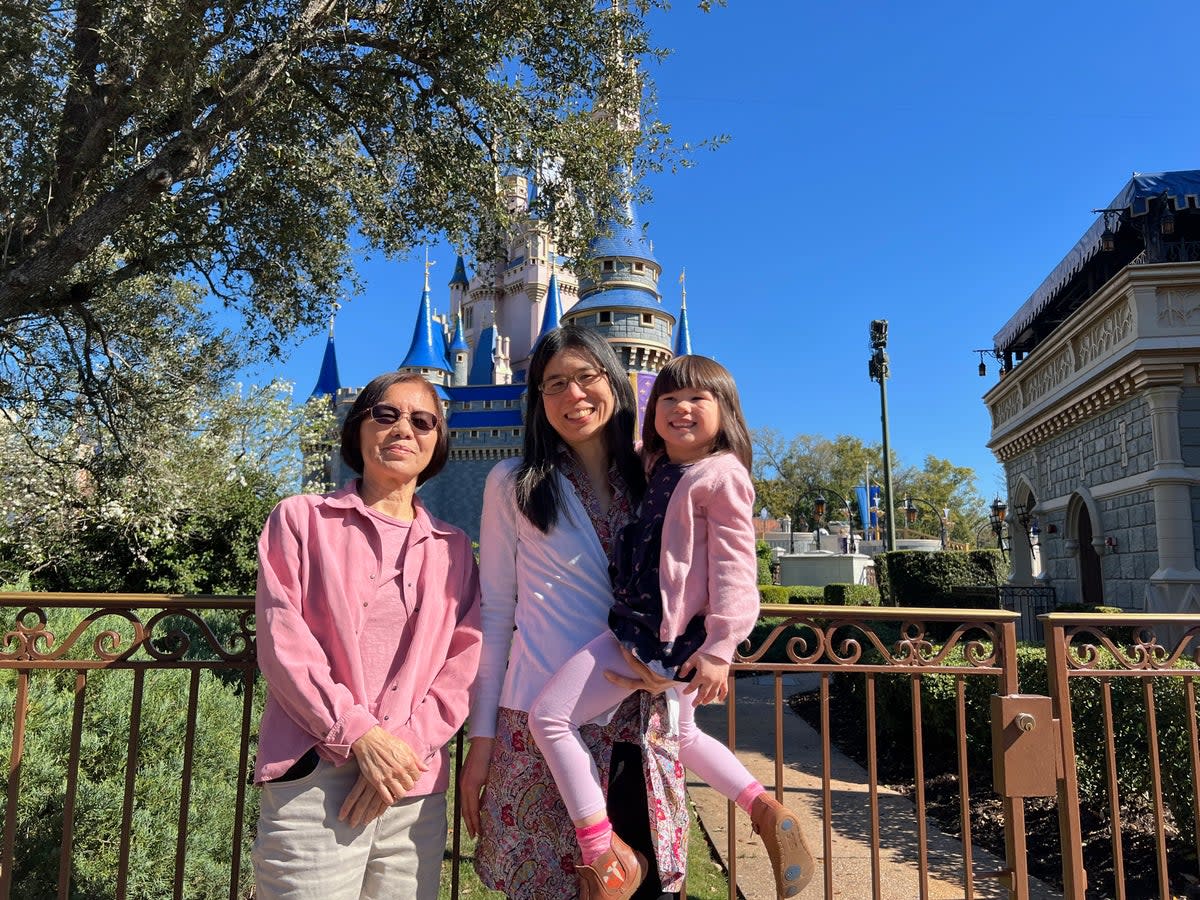
Past alligator-laden wetlands, the train follows US Highway 1, the longest American north-south highway, a road notorious for traffic jams caused by so-called “snowbirds” – northerners who migrate to Florida for the winter. On our journey I sipped a glass of wine – another benefit of not taking the road. In one section of the train, a group adorned in fuchsia and aquamarine boarded with glasses of sparkling cuvées and grapefruit palomas. The train manager reminded us that the liquor licence only applies when the train is moving.
Everything inside the train appeared to be shiny and new – from its modern light grey seats to its wide aisles. My mum and daughter laughed and played games while facing each other across the table. We passed the time by counting boats – 10 rusty ones in boatyards, three sleek yachts out at sea, and one in the sapphire blue waters of the St Lucie River.
As the train moved inland, the devastation of citrus greening, a disease that ravaged the state’s orange industry, became apparent. My mum pointed out the lone tangelo tree standing among the patch of overgrown saw palmettos and pine trees – it appeared to be an abandoned orange orchard. It’s here we reached our highest speed, 124 mph, while cruising over the San Sebastian River.
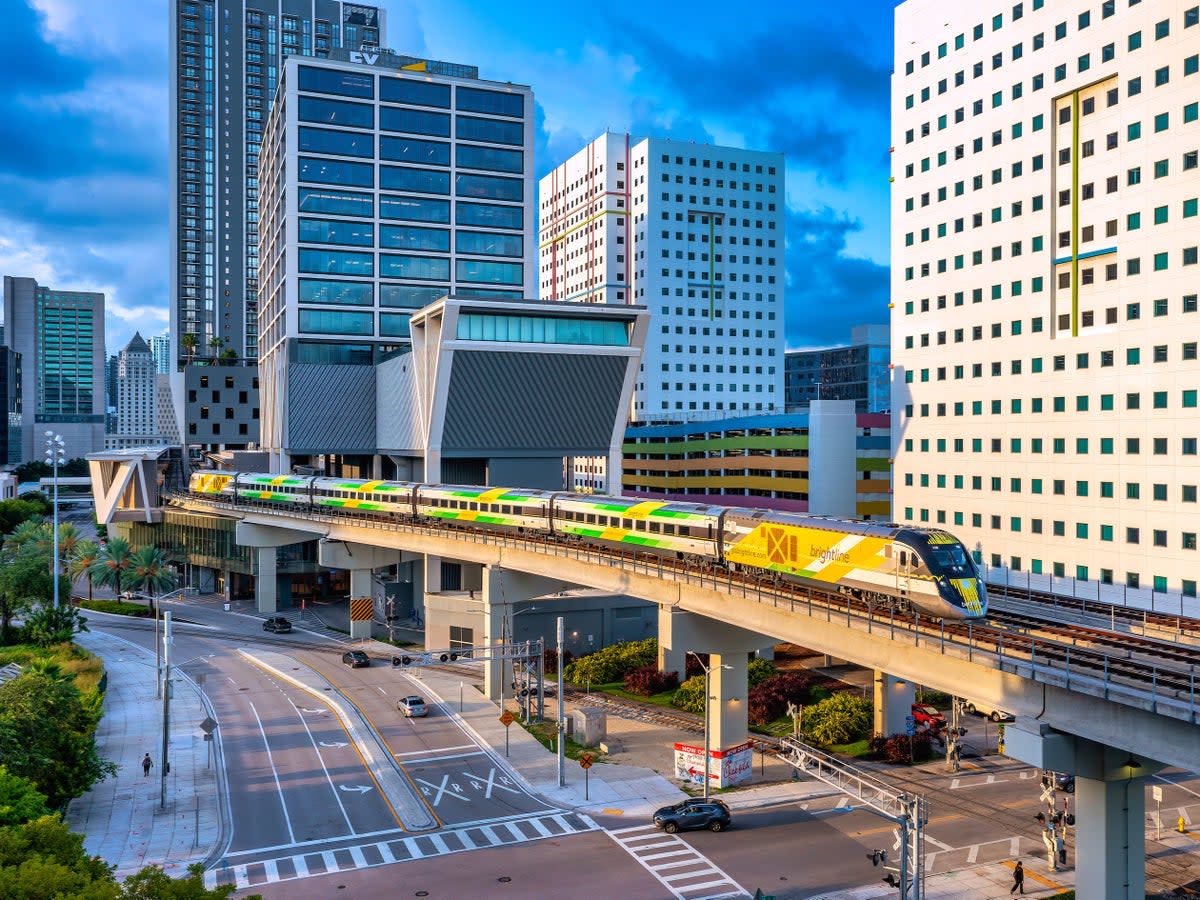
We could have stayed in a Disney resort, but a villa in Kissimmee was more reasonably priced at $180 per night. Kissimmee was where my family stayed when we were young, a city once surrounded by cattle ranches and navel orange farms. Staying outside the resort provided some respite, but there was no escaping the giant colourful waterpark at our doorstep.
Heading home on the Brightline, a tanned man in a purple print shirt holding a Stella Artois told me the train is the best way for locals to get to Miami Marlins baseball games and the Miami International Boat Show. As we headed towards our final stop (we travelled all the way back to Miami), the train offered an elevated tour of Central Miami with its Art Deco styling and modern highrises.
Travelling by road the whole return journey would have cost us $12-$40 in tolls plus gas, while tickets start at $49 for the Brightline. Was it an overall better experience than driving? Although not much quicker nor cheaper, it certainly took the stress out of the journey and was more comfortable.
My mum reflected that my father would have appreciated the changing landscape of the Florida he once knew, had he been with us. It was altogether a more magical experience travelling to Orlando by train – befitting a journey to the Magic Kingdom.
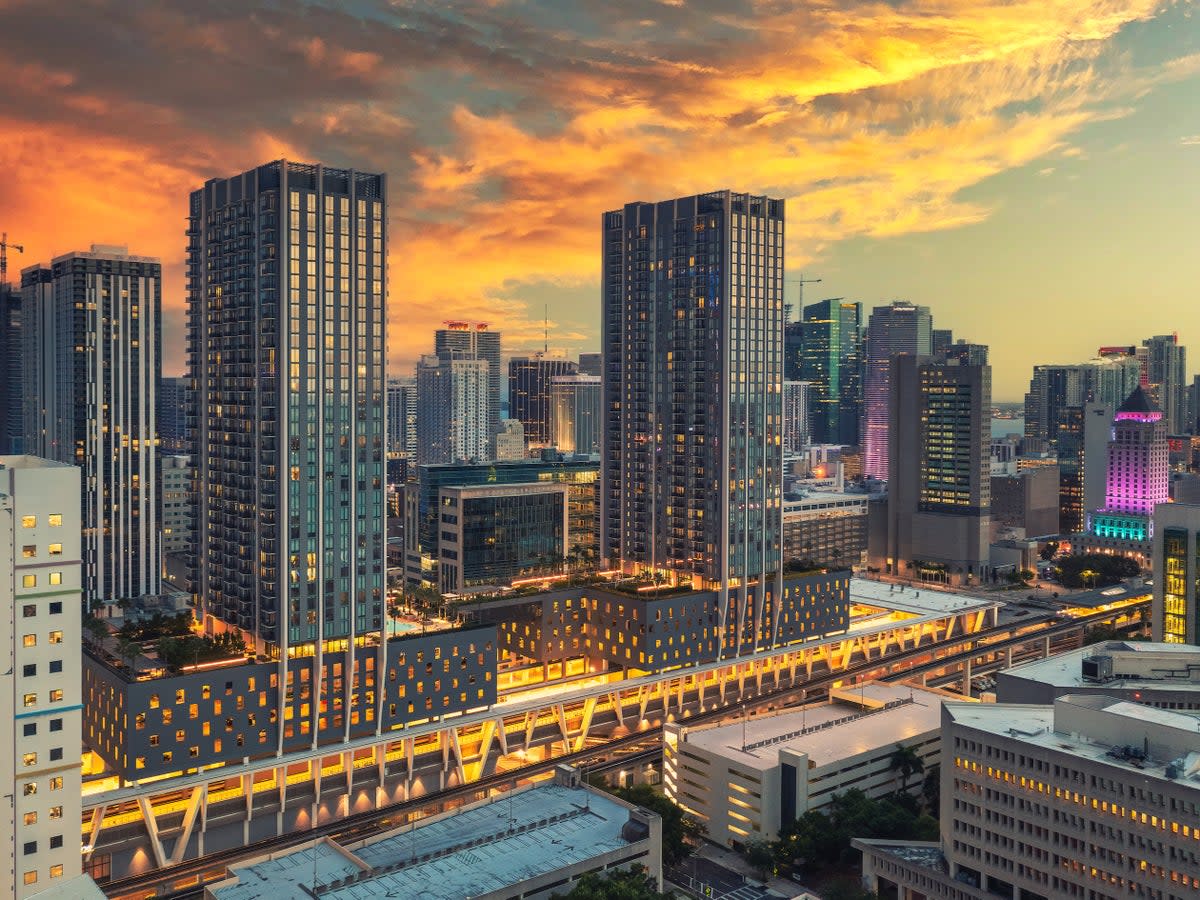
Travel essentials
Brightline
Tickets start at $49 for standard class and $139 for premium class, which includes a five-mile Uber ride from any station (except Orlando) for the mobility impaired. Overnight station parking is $10 per day.
How to get there
Multiple airlines fly from London to Miami and Orlando, including British Airways and Virgin Atlantic. The journey time is around 10 hours.
There’s a shuttle that runs between Miami international airport and the Brightline station. Tickets cost $10 for the first passenger and $5 for each additional passenger. The station is also within a 10-minute walk of Miami’s free Metromover monorail, which takes you directly to the airport and into downtown Miami.
The Brightline stops at Orlando international airport. You’ll need a taxi transfer from there to Disney World.
Where to Stay
Kissimmee
Kissimmee is a 40-minute drive from Orlando’s Brightline station. Villas from Jeeves Florida Rentals and Rentyl Resorts include entry to a giant water park, heated swimming pools and spas, themed rooms and accessible shuttles to Disney World.
Evermore Orlando Resort
This resort opened in January 2024 and is a 30-minute drive from the Orlando Brightline station. Villas and flats surround a man-made lagoon and 20 acres of beach. On-site activities include swimming, kayaking, golfing, luxury spa experiences and dining at 12 restaurants. Transport to Disney World with an accessible shuttle, and an accessible trolley service around the resort is included.
Chau-Jean Lin and her family were travelling as guests of Experience Kissimmee and Brightline.